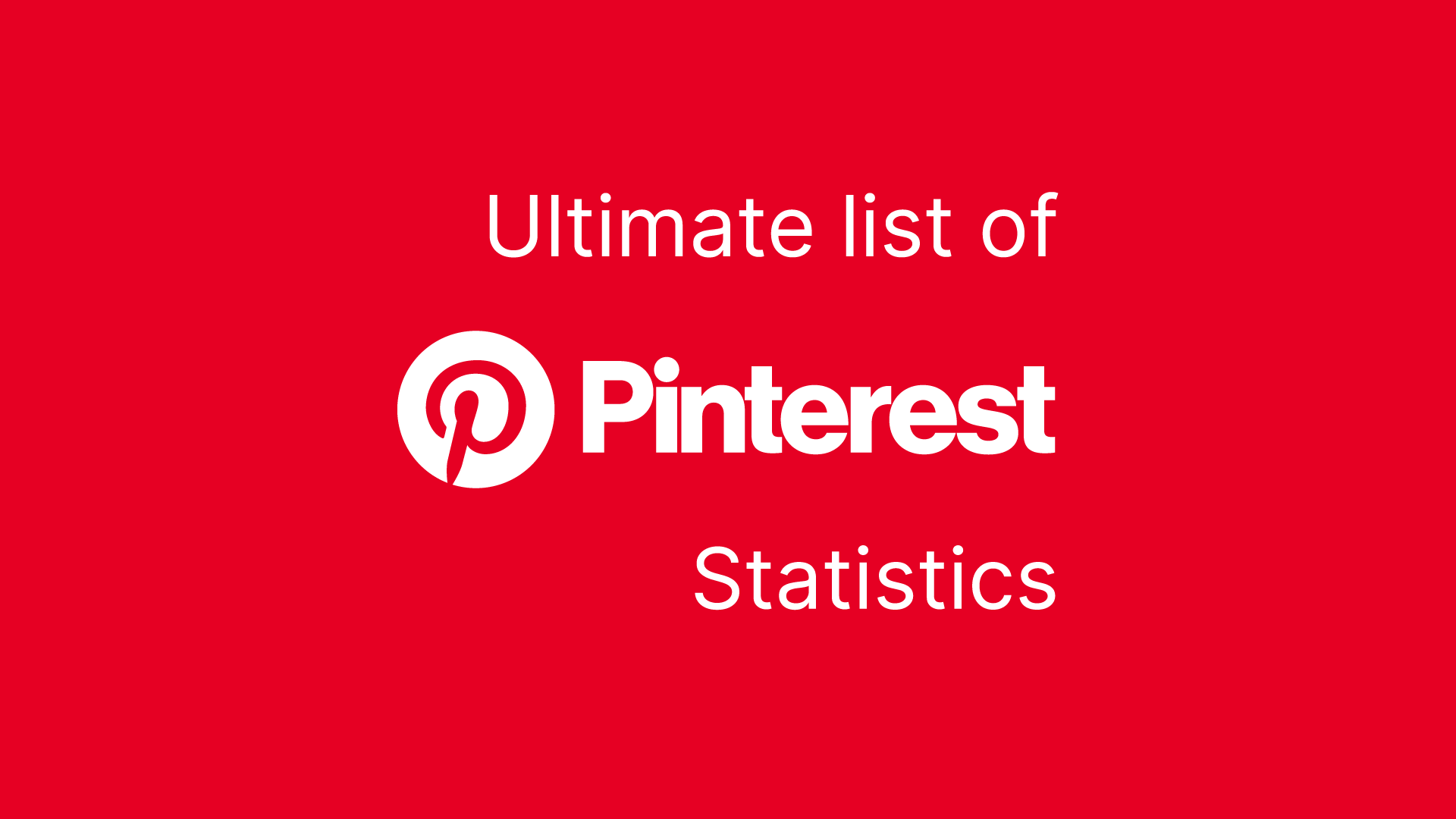|
Getting your Trinity Audio player ready...
|
Social media continues to grow in popularity, and there are now more people than ever using it to connect with friends, family, and colleagues. This growth has led to a lot of confusion about what constitutes a good social media strategy.
Social media marketing can be overwhelming for some business owners because there are so many different networks out there, and they keep changing their features. Even if you don't have a team of social marketing experts at your disposal, you need to have a clear plan for your social media marketing campaigns.
In this article we will define the term “social media strategy” and explain why you need one if you want to use social media effectively. We will also look at some steps you can follow to develop a social media strategy for your business.

What is a Social Media Strategy?
A social media strategy is a comprehensive roadmap for every aspect of your online presence. It includes everything from the type of posts you make, to where you publish them, to whom you target, and even the metrics you use to measure success. A social media strategy is an outgrowth of your business' overall digital strategy. It outlines what type of content your business will post, where it will post it, and how often it will do so.
Your social media strategy should include social media goals that complement the rest of your digital marketing efforts. These goals are typically specific numbers like increasing followers, engaging fans, or driving traffic.
Social media strategies vary based on whether you're promoting a product or service, selling something, or just sharing information about yourself. They also vary based on the size of your organization, budget, and current level of expertise.
The most important part of developing a successful social media strategy is understanding your customer base. What types of posts resonate best with your audience? How frequently should you post? Which platforms work best for you?
Why you need a social media strategy for your Business
You need a social media marketing plan for your business because social media is everywhere. If you don't use it, you're missing out on potential clients and opportunities.
Below are some of the reasons why you should create a social media strategy for your business.
1. Expanding Your social presence
The majority of people today are now on social media sites. In fact, according to DataReportal, there are over 4.74 billion active monthly users worldwide. This number continues to grow every day. A lot of people use social media platforms like Facebook, Instagram, Twitter, LinkedIn, Snapchat, YouTube, Pinterest, Reddit, Tumblr, and others.
These platforms allow us to communicate with our friends and families, as well as reach out to companies and organizations we want to work with. Social media is one of the most powerful marketing tools available to small businesses.
As a business, you have access to a much larger audience than you might think. You can target specific audiences based on location, age, gender, interests, income level, marital status, education level, occupation, and many other factors. If you know how to effectively market yourself online, you can easily expand your customer base.
2. Create Personalized messages
Personalization is about understanding your audiences and offering them what they are looking for. This includes knowing what products, services, and offers resonate best with each individual customer.
These tools make it easy to reach out to specific individuals, groups, and demographics. You can even target people based on location, interests, age, gender, and many other factors.
With a number of social media platforms, and detailed customer insights you can offer a highly personalized experience to your current and potential customers. You can study your audience’s data for better targeting, create powerful social campaigns, influence purchase decisions with personalized marketing offers, and much more.
With these tools, you can collect information about your audience and use it to develop an effective marketing strategy. For example, you can find out where your customers spend most of their time online, what types of posts they engage with, and what type of content resonates best with them.
The following are some of our favorite tools that help you gain insight into your audience and make smarter decisions about how to reach them.
Facebook Ads Manager (Now Meta)
Facebook’s ad manager allows you to manage multiple accounts from one place. This gives you access to your ads across different audiences, devices, and locations. You can even set up custom audiences based on specific criteria such as gender, age, location, interests, etc.
Google Analytics
Google Analytics is a free tool that lets you track and analyze traffic to your site. You can see where people come from, what keywords they used to find you, and how many conversions you had. You can also segment your visitors based on demographics, device type, and more.
Instagram Insights
Instagram provides insights into your followers’ behavior, including demographics, interests, and behaviors. You can use this information to tailor your posts and photos to appeal to your target audience.
Twitter Analytics
Twitter Analytics helps you understand your audience’s tweets and interactions. You can learn things like whether your followers engage with your tweets, how often they tweet, and what topics they talk about most frequently.
LinkedIn Marketing Solutions
LinkedIn Marketing Solutions gives you access to your entire network, allowing you to send targeted messages to your contacts. You can even follow up with those who don't respond to your initial outreach.
Armed with this knowledge, you can craft relevant messages that speak to your audience and encourage them to take action.
3. Get focused results
Social media marketing is about much more than simply sharing information or promoting products; it’s about building relationships with customers and potential clients. In fact, according to HubSpot, 80% of consumers trust recommendations from friends and family over those from companies. This makes sense because people are more likely to buy something from someone they know and trust.
Social media marketing is a great way to connect with your audience and build relationships. But without a strategy, it can become a chore that takes up too much time. So how do you know whether you are spending your time effectively? Here are some questions to ask yourself:
- Do I post consistently across platforms?
- Am I posting about topics my followers care about?
- Are my posts helping me achieve my goals?
- Is there anything else I could be doing to improve my social media presence?
- Does my social media presence make sense within the context of my overall brand identity?
- How does my social media presence fit into my larger digital marketing plan?
A well thought out strategy will allow you to achieve your goals faster. You want to make sure that everything you do aligns with your overall objectives. For example, if you want to increase sales, you might post about how great your product is, but if you want to build brand awareness, you could talk about customer service.
Your social media posts should always align with a specific goal. If you want to generate leads, you should post about upcoming events. If you want to build brand recognition, you could post about your latest blog article. And if you want to improve conversion rates, you could post about special offers.
4. Allows Transparency
Marketing is about being transparent. In today’s world, transparency is key. Consumers are becoming increasingly savvy and want to know what you’re doing behind closed doors. They want to see how you operate and understand why you do things the way you do. And if you don’t provide them with this information, they won’t buy from you.
Social media is a great way to connect with customers, engage with influencers, and learn about your brand. But it's important to understand how social media works, because it's not always easy to tell whether someone is being honest or misleading. If you're trying to make sense of what people are saying about you online, there are some things you can do to improve your social media reputation.
First, know where you stand. Social media platforms like Facebook and Twitter allow you to see exactly how many likes, shares, comments, and retweets your posts receive. This information lets you track your performance over time, and compare yourself to competitors.
Second, pay attention to what people are saying about your brand. Look up mentions of your name on social media sites, and read the comments. Are people talking positively or negatively about your products and services? What kinds of problems are people having with your product or service? Is someone complaining about something you did wrong? These questions help you identify areas where you could improve.
Finally, interact with your fans and followers. Responding to negative feedback helps you show that you care about your customers' experience. And interacting with positive feedback builds trust and credibility.
How to build your social media strategy
Social media marketing is one of the most effective ways to reach out to customers and prospects. But it takes planning and execution to make sure you are reaching the right audience and getting the best return on investment. In this article we explain how to build a solid social media strategy.
A social media strategy is a combination of tactics, tools, and processes used to build, manage, and measure the effectiveness of a social media campaign. This includes everything from creating a brand identity to managing customer relationships.
Your social media strategy should include:
- Who your target audience is
- What type of content you'll post
- Which social platforms you'll use
- And your overall goals.
You can have multiple social media campaigns. Each strategy serves different objectives.
There are three main components to every successful social media strategy:
- Audience
- Content
- Engagement
Here are the steps you can take to build a social media strategy that can cause you to win:
- Define your Business goals
- Select your target audience for your campaign
- Choose social media platforms
- Measure performance
- Curate the right targeted content
- Schedule your posts
Define your business goals
Business goals are what you want your business to accomplish. They are the end goal of your marketing efforts. Without clear goals, it’s hard to know whether you’re making progress towards achieving success.
A great way to define your business goals is to think about how you would describe your ideal customer.
- What do they look like?
- How old are they?
- Where do they live?
- Do they work full-time?
- Are they married? Have kids?
- What does their family life look like?
- What do they spend money on?
- What hobbies do they enjoy?
- What are their interests?
Once you have identified your ideal customers, ask yourself questions such as:
- Who are my competitors?
- What do I offer that no one else offers?
- Why should someone buy from me rather than from my competition?
- What makes me unique?
If you have ambitions to use social media to market your business, the first step should always be defining your goals. It could simply be just one key aim – increase sales, say. Or it could be multiple goals that are related, like extending reach to more people in a certain area or creating more customer loyalty.
The whole purpose of a social media strategy is to reach these goals, so they need to be your starting point. Decide on what they should be and then build a plan around how you’re going to get there.
This should include measurable targets that suggest when you can decide whether the work you’ve been doing is successful – for example ‘increase Twitter followers by 10% within three months’ – rather than ambiguous figures like ‘more followers’ and ‘higher reach’.
Select your target audience for your campaign
Social media platforms are great tools for connecting with people, but it’s important to know whom you’re targeting. If you don’t know who your ideal customer is, how do you plan to connect with them? You might think that everyone wants what you offer, but that’s not true. There are different types of customers out there, and each one requires a unique approach.
The first step is to identify your target market. This could mean identifying your niche or industry, or even determining where your product fits within a larger category. Once you know who you’re trying to reach, you can start crafting a social media strategy that works best for them.
Your social media strategy should be customized to your target audience. For example, if you sell shoes online, you probably wouldn’t use Facebook to promote your products. Instead, you’d focus on Instagram, Pinterest, LinkedIn, Twitter, YouTube, Snapchat, etc. Each platform offers a specific set of features designed to help you reach your desired audience.
Once you understand who you’re talking to, you can begin developing content that resonates with them. When you create content, make sure it addresses the needs of your target audience. Don’t just post about yourself or your brand; provide value to your followers. Make sure you’re sharing information that helps them solve problems, learn something new, or simply enjoy themselves.
Finally, remember that every piece of content you produce should serve a purpose. Whether it’s a blog post, video, photo, or infographic, you should always ask yourself why you’re making it. Is it because you want to inform others, entertain them, or persuade them? Whatever your goal, make sure your content accomplishes it.
Choose social media platforms
When trying to decide which social networks to engage with, it’s always good to start by choosing the ones that work best for your target audience. Every social network is different and going headfirst into one without doing your research may end up yielding no results.
It’s important for businesses to learn who their target audience is and where they are most likely to be found. Once you understand that, you can begin engaging with them by finding out what kind of content will draw them in and how you can use that content betterment decisions on the type of content, product or service you should offer if needed.
Using analytics through platforms such as Google Analytics, businesses can start studying the trends among their target audiences in order to find out when and how often certain pieces of content should be created, what services or products they should offer, etc.
Knowing this information will allow businesses to better tailor their messages effectively so that they reach their target audience while also amplifying their messages across all available platforms.
Measure your social media marketing performance
The world of digital marketing is constantly evolving. As we move forward, it’s important to keep up with the latest trends and best practices.
One way to do this is by measuring your performance. In fact, there are several ways to measure performance, including social media analytics tools, conversion tracking, and customer experience management software.
These tools allow you to see what works and what doesn’t. They also provide insight into why certain things happen. This information allows you to make adjustments to your strategy, resulting in better ROI.
Social Media Analytics Tools
One of the most popular types of measurement tools is social media analytics. These tools collect data from different sources, such as Facebook, Twitter, Instagram, YouTube, LinkedIn, Pinterest, and others.
You can use these tools to track mentions, likes, shares, comments, retweets, and even conversions. For example, you could look at how many people clicked on a link to a blog post versus how many people shared it on Facebook. This type of analysis provides insight into how well your content performs.
Conversion Tracking
Another way to measure performance is through conversion tracking. Conversion tracking is essentially a tool used to monitor whether or not someone completed a desired action.
For instance, you might want to know how many people visited your site, downloaded a white paper, signed up for a newsletter, or purchased a product. By comparing the number of visitors to the number of conversions, you can determine which methods are working and which aren’t.
Customer Experience Management Software
Finally, there are some companies that specialize in helping businesses manage their customer experiences. Customer experience management software collects data from multiple channels, such as email, chat, phone calls, and web forms.
Using this data, you can identify areas where your customers struggle and find out what needs to change.
Create the right social media content
Content creation isn’t just about posting pictures or sharing articles. You need to think about how you want people to see your brand. A successful social media plan needs to include content – lots of it.
But as much as quantity matters, quality is even more important. Different types of posts work better with different audiences on different platforms. What works on LinkedIn may not go down so well on TikTok!
Before you put the “content creation” in motion, you need to know what kind of material will complement your social media strategy. What type of content will captivate and engage your target audience? Do you post videos? Infographics? Reel off statistics or share links to industry studies? How about memes, quotes or polls?
Again, your target audience, and the platforms you use should be taken into consideration when deciding on different types of content that can be prepared. Keep an eye out for how various trends evolve over time and adapt accordingly.
Schedule your social media content/ posts
When it comes to social media, planning ahead is key. Knowing when and how often you plan to post can help you create a content calendar, which will ensure that your social accounts remain active and engaged.
The most important thing is to decide what is the best time for you to post. Different types of content require different timings and effectiveness may depend on the type of content, industry and audience.
Before you start creating a content calendar for your social media accounts, there are several questions that need to be answered first: How often do you plan to post? What is the best time to post? And most importantly, what social media management tools will you use?
It may not always be possible to stick to a calendar, but with the right tools, such as Buffer or Hootsuite, you can ensure that your schedule is on autopilot. Creating a schedule helps you identify the gaps in your copywriting abilities or creative skillset so that you can be better prepared to fill those in when necessary. With these tools in place and an up-to-date content calendar at hand, keeping up with social posts becomes much easier!
Strategize to Get Busy on Social Media
Having a social media strategy is essential if you want your small business to succeed on social media. Whether you’re managing one account or multiple accounts for different goals, having a definitive plan will set the tone for how you execute your initiatives and measure success.
A social media strategy gives your marketing efforts a sense of purpose. Whether you're creating new content, replying to someone, writing a caption, or creating a lead generation campaign, it guides you in the right direction and helps ensure that what you are doing is part of an overall business objective.
Furthermore, it can help create consistency within all channels by providing an overall plan of attack. You may need to tweak it from time-to-time as trends and algorithms change but having an effective documented strategy right in the beginning gives your marketing campaigns a strong foundation for boosting your business.







